If you live anywhere in the South, you’ve likely heard the old joke that says “whenever someone dies, they don’t go to heaven (or that other place), without connecting in Atlanta!”
Having spent 14 years living in various southern cities and connected through Atlanta more times than I care to remember, there’s no doubt the scene at Hartsfield-Jackson International Airport (ATL) the other weekend is one that won’t soon be forgotten.
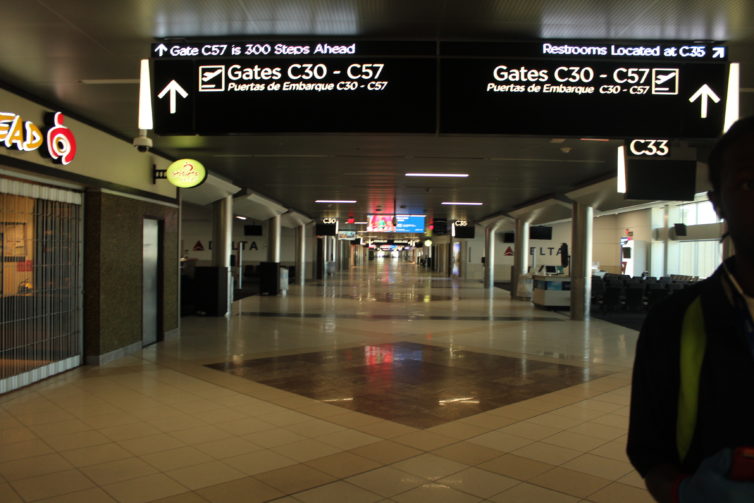
A peak into an empty “C” gates at ATL, thanks to an airport worker who allowed this pic while the door for employees was open.
Recently, I needed to take a number of flights for family reasons, and in the current coronavirus climate, I wasn’t sure what to expect. My adventure took me through one Delta mega-hub (Atlanta ATL) to another (Minneapolis MSP), where typically the flights would be full. However, this time they were only about 25 percent occupied. The ATL to MSP flight, usually an A321 or 757, had been replaced by a smaller 737-800.
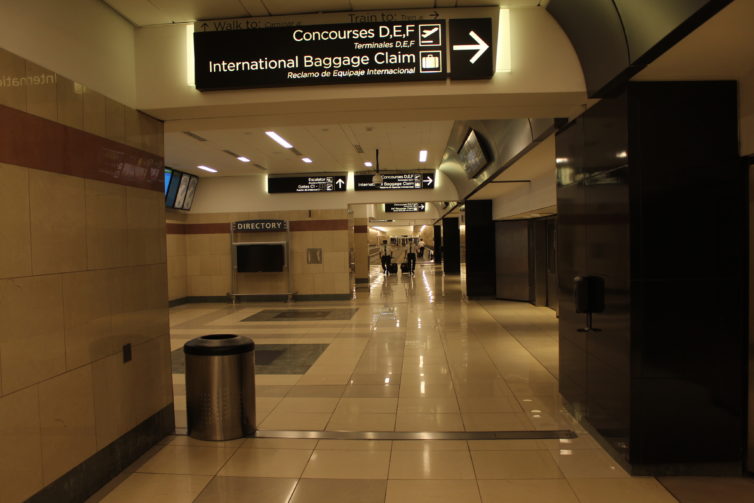
No passengers and just 2 pilots occupy the “Plane Train” level at ATL below the C gates.
Atlanta currently has multiple concourses closed with fully sheetrocked walls and security doors to allow only airport and airline staff to enter. The ’œC’ and ’œE’ terminals were just empty shells. TV screens packed with flight info now had just a couple active monitors.
BONUS: Feeling the impact of COVID-19 on the US Commercial Airline Industry
The food court in the E terminal had just one restaurant open: McDonald’s. They were so happy to see anyone that they gave me 10% off my McDouble — that 20 cents will go far someday, I just know it! You know it’s bad when even airport concessions start discounting prices.
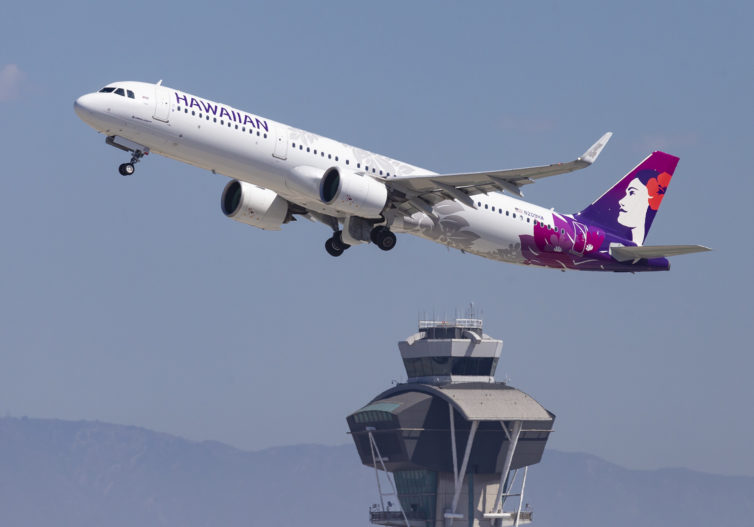
Hawaiian’s A321neos have been grounded by COVID-19; this aircraft is seen departing LAX in September 2019 – Photo: Nick Benson
For those following the impacts of COVID-19 on American aviation closely, it’s been an exhausting couple of months. Airlines have been hemorrhaging money, arguing for CARES Act exemptions from a fairly-inflexible DOT, and reducing their employment obligations to tens of thousands of employees. The full impact of the crisis on aviation, and the economy at large, still isn’t known.
The airlines have been reacting to the decreased demand for passenger flights by operating fewer flights with fewer aircraft. Being the avgeek I am, I was interested to see the evolution of each airline’s fleet as it reacted to COVID-19 – which types are getting hit hardest? Do airlines have a preference for newer, more efficient equipment, despite decreased fuel costs? There has been some coverage of the overall number of flights getting operated, pre-crisis vs. post-crisis scheduling, but I was interested to see how many aircraft each airline was actually operating.
The charts that follow show the total number of unique aircraft that flew for each airline, by type, each week from 30 December 2018 through 26 April 2020. This includes all flights that were detected, primarily derived by ADS-B reports, to JetTip’s data provider, including ferry, maintenance, cargo, etc. In other words, not all of these flights were necessarily revenue passenger flights – several carriers are doing cargo-only flights with their heavies now, and some flights are being operated to keep up with maintenance requirements.
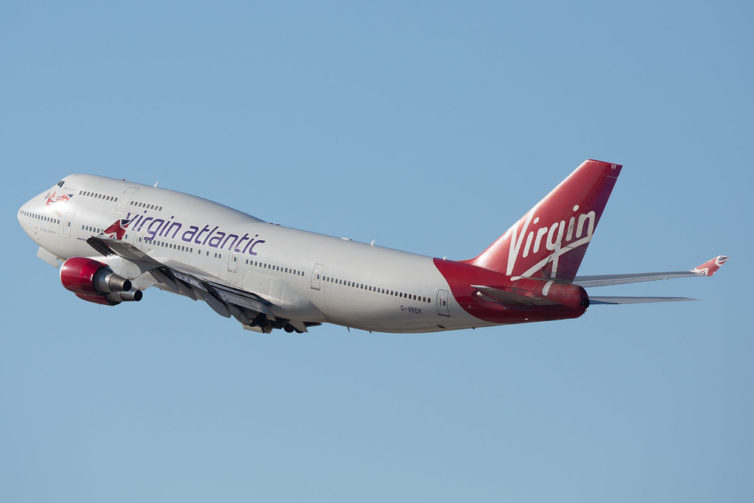
Virgin Atlantic Boeing 747-400 – Photo: Jeremy Dwyer Lindgren | JDLMultimedia
Somewhere in Massachusetts, a mid-’90s family photo album possesses the first photo I ever took of a Boeing 747. It was a Virgin Atlantic bird at Orlando International.
I couldn’t tell you the last time I saw the photo, but I can still recall it clearly twenty-five years later: poorly framed through the window of a Delta 737-200 that I definitely did not appreciate enough at the time; the distinctive Virgin red tail towered over everything else, glowing in the humid, golden-hour Florida air.
While Disney World itself might have been the highlight of going to Disney World for most kids, the airport and the airplanes were the far and away winner for me. I loved every detail that I didn’t hate (turns out younger me found flying absolutely petrifying, but that’s another story).
The curbside chaos at Boston Logan, with barking state troopers and bustling skycaps. The busyness of the terminal, filled with people and the promise of going to new places. All the different airlines and airplanes, many of whom are no longer with us. The smell of the forced air on boarding (gosh I love that smell). Riding that skytrain thing, I don’t know what it’s called, at the airport in Orlando.
It was thrilling to ten year old me.
Yet craning my neck out the window, trying to steal a glimpse of the Virgin 747s after landing ’“ that was always the highlight. Every time.
When I learned that Kansas City International (MCI) would become the location of a mass airplane storage site, I ignored it. COVID-19 has brought unprecedented and rapid change upon us all. And we are all coping with it differently. For me, rather than accept the fact that my passion has ground to a halt, I have done my best to ignore the bad news while focusing internally on my family and friends.
But history is in the making and after a few weeks of airplane stockpiling I had to go see. I don’t know what I expected. I was excited to visit the airport for the first time in months. But when we drove past the threshold of runway 19L the site was… heartbreaking. Words truly cannot describe the feeling of seeing over a hundred planes in “active storage” lining a once busy runway and taxiway at an airport that has seen consistent and impressive growth over the past few years.
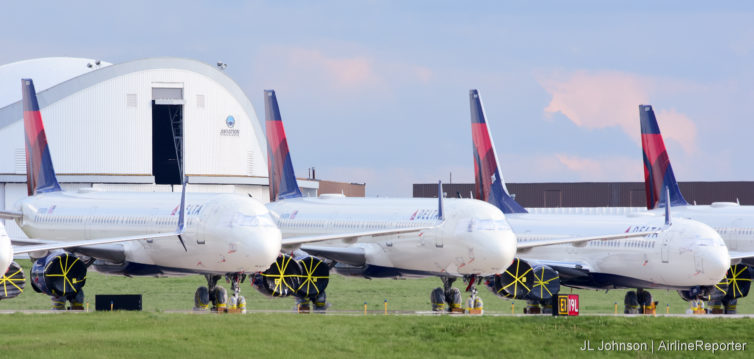
Parked Plane Stats:
I called my good friend Nick Benson, chief AvGeek over at JetTip to see just how many planes have been parked at Kansas City International since the pandemic took hold.
Saying goodbye to any 747 is hard, but one that is unique, is harder.
Thanks to COVID, the majority of airlines have grounded their four-engine widebody planes. Most A380s, A340s, and 747-8s will see the skies again. But a return to flight isn’t as certain for many 747-400s, which were already long in the tooth.
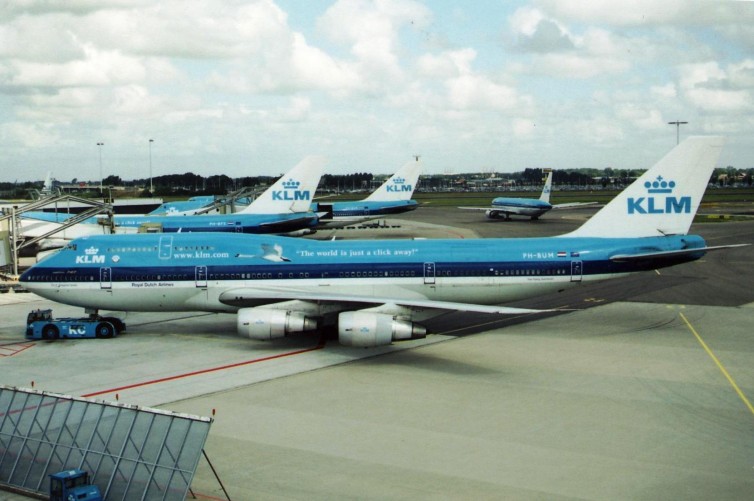
The same KLM Boeing 747-200 now with a Stretched Upper Deck. Taken in August 2003.
The Dutch airline KLM was already working towards a 2021 retirement for its 747-400s, but thanks to COVID the fleet was retired a few weeks ago. And the AvGeek nostalgists that we are, we felt it was a departure worth commemorating. Especially because KLM operated the oddball passenger/freighter hybrid called the Combi, which included a cargo bay in the rear part of the main deck.
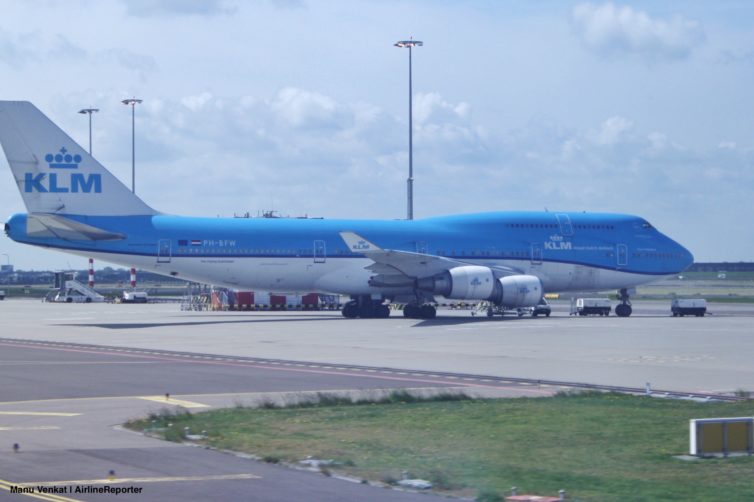
Read on for a quick farewell to the KLM Combi and the rest of its proud 747 fleet.
Update 4/18: It looks like KLM has brought back a small number of 747 Combi flights connecting Amsterdam and a few Asian industrial centers. Not sure how long that will last, but we’re happy the Combi has one final job to do with KLM.






